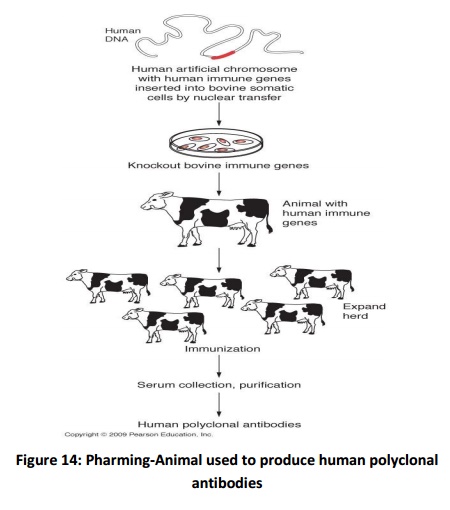Chapter: Basic Concept of Biotechnology : Animal Biotechnology
Use of Animals in Research
Use of Animals
in Research
·
Animals play a vital role in primary
research. The use of animal models permits more rapid assessment of the effects
of new medical treatments and other products. Computer models and invitro studies of cell cultures are
often used as supplements toanimal research, but they can't entirely duplicate
the results in living organisms. Recent developments in animal biotechnology
have
changed medicine, agriculture, and the efforts to preserve endangered animals.
· For
a new product to be approved for human use, the manufacturer must first
demonstrate that it is safe for use. Trials are required on cell cultures, in
live animals, and on human subjects. Testing on live animal models requires
that two or more species be used because different effects are observed in
different animals. If problems are detected in the animal tests, human subjects
are never recruited for trials. The animals used most often are pure-bred mice
and rats, but other species are also used. Another extremely valuable research
animal is the zebrafish, a hardy aquarium fish. Dogs are used for the study of
cancer, heart disease and lung disorders. HIV and AIDS research is conducted on
monkeys and chimpanzees.
· Animal
research is very heavily regulated. The Animal Welfare Act sets standards
concerning the housing, feeding, cleanliness and medical care of research
animals. Veterinarians also conduct research which has led to new cancer
treatments for pets and studies in their adaptations for humans.
· Animal
Models
· Mice
· Rats
· Zebrafish
(3 month generation time, 200 progeny, complete embryogenesis in 120 hrs)
· Dogs
(lungs and cardiovascular system)
· Cats
· Pigs
(PPL Therapeutics- delete a gene which causes hyperacute rejection of
pig-to-human organ transplantation)
· Primates
(HIV and AIDs research, geriatric research)
· Bioengineering
Mosquitoes to Prevent Malaria
·
Cloned in a gene that prevents the
parasite from traversing the midgut; blocking the continuation of its life
cycle
·
Developed an antibody that prevents the
parasite from entering the mosquito’s salivary gland
Pharming: Pharming
is not just a misspelled word ! The term"pharming" comes from a
combination of the words "farming" and "pharmaceuticals" -
a blending of the basic methods of agriculture with advanced biotechnology.
Gene
pharming is a technology that scientists use to alter an animal's own DNA, or
to splice in new DNA, called a transgene, from another species. In pharming,
these genetically modified (transgenic) animals are mostly used to make human
proteins that have medicinal value. The protein encoded by the transgene is
secreted into the animal's milk, eggs or blood, and then collected and purified
(Fig. 14). One interesting GMO organism that has been in the news lately is the
“glowing fish.” GloFish ™ fluorescent zebra fish were specially bred to help
detect environmental pollutants.

Related Topics